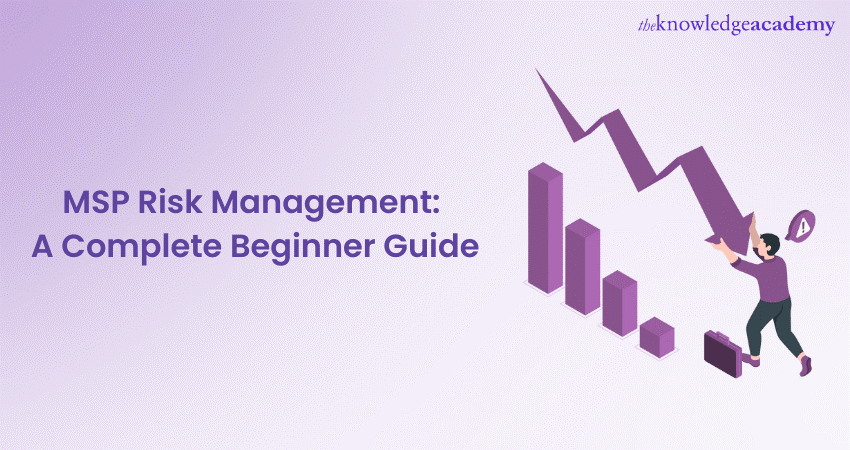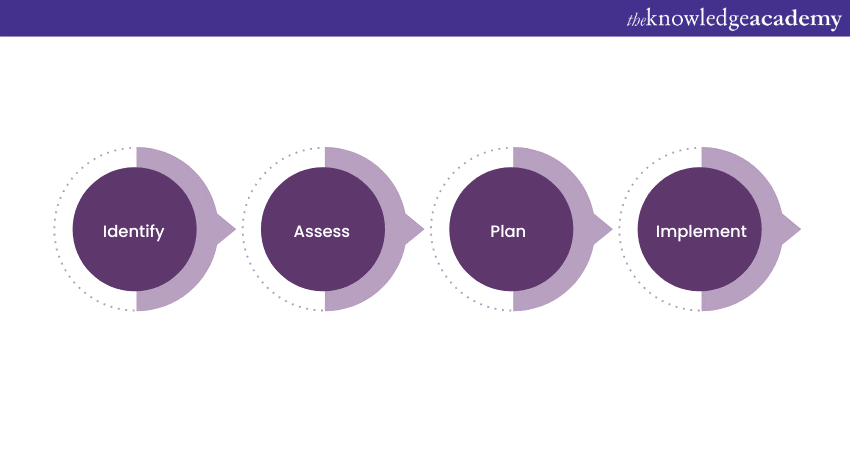We may not have the course you’re looking for. If you enquire or give us a call on +61 272026926 and speak to our training experts, we may still be able to help with your training requirements.
We ensure quality, budget-alignment, and timely delivery by our expert instructors.

Understanding risk management is crucial for the success of any program or project. Whether you're embarking on a complex transformation initiative or launching a new business venture, identifying, assessing, and mitigating risks is essential in achieving desired outcomes. This is where Managing Successful Programmes or MSP Risk Management comes into play.
MSP is a globally recognised methodology designed to guide organisations in managing and delivering complex programmes. Within MSP, risk management plays a vital role in identifying potential threats and opportunities and proactively addressing them to safeguard program success.
This blog explores MSP Risk Management, its benefits, and its framework. Read ahead to learn more!
Table of Contents
1) What is MSP?
2) The MSP Risk Management framework
a) Identify
b) Assess
c) Plan
d) Implement
3) Benefits of MSP Risk Management
4) Conclusion
What is MSP?
Managing Successful Programmes (MSP) is a widely adopted framework that offers a structured approach to managing and delivering complex programmes. It offers a set of MSP principles, best practices, and techniques to guide organisations in achieving their strategic objectives through effective program management.
It operates on the understanding that programs are temporary, unique endeavours that bring about significant change. These programs typically consist of a group of related projects, activities, and business changes aimed at achieving a specific goal. It also recognises the inherent complexity and uncertainty that come with managing such programs.
One of the key aspects of MSP is the emphasis it places on governance and leadership. It promotes the establishment of a program board, incorporating Risk Management in ISO 27001 and ISO 27005, consisting of senior executives and key stakeholders who provide strategic direction, decision-making authority, and oversight throughout the program lifecycle.
Ready to enhance your skills in MSP Risk Management? Sign up for our MSP® Training Courses now!
The MSP Risk Management framework
The MSP framework for risk management forms a critical component of the overall MSP methodology. By integrating risk management throughout the program lifecycle, it ensures that risks are proactively managed, enabling successful program delivery. This framework consists of four stages - Identify, Assess, Plan, and Implement. Let's explore each stage in detail:

1) Identify
The first stage – Identify - involves identifying potential risks that may impact the program's objectives. By comprehensively identifying risks, program teams can gain a clear understanding of potential threats and opportunities, allowing for appropriate risk response strategies. Here are the key aspects of identifying risks within MSP:
a) Engaging stakeholders
b) Comprehensive risk assessment
c) Utilising risk identification techniques
d) Documentation
2) Assess
Once risks are identified, they need to be assessed regarding their potential impact and likelihood. It involves evaluating the potential impact and probability of identified risks to determine their significance and prioritise them for further action. The assessment stage provides valuable insights that enable program teams to make informed decisions about risk response strategies. Here are its key aspects:
a) Impact and likelihood evaluation
b) Qualitative risk analysis
c) Quantitative risk analysis
d) Risk prioritisation
e) Regular review and updating
Preparing for a risk management interview? Check out our Risk Management Interview Questions and Answers to help you land the job!
3) Plan
Planning and mitigating risks is crucial and this stage involves developing a comprehensive risk management plan and implementing strategies to address identified risks. Program teams can minimise potential negative impacts and maximise opportunities by proactively planning and mitigating risks. The critical aspects of planning and mitigating risks include:
a) Risk management plan development
b) Mitigation strategies
c) Resource allocation
d) Contingency planning
e) Regular monitoring
Ready to launch your Managed Services business? Grab the MSP Startup Guide now!
4) Implement
Implementing risk management is the final stage of the framework. It involves executing the plan for managing risks, monitoring identified risks, and taking necessary actions to address them. Program teams can proactively respond to emerging threats and ensure program success by embedding effective practices aimed at managing risk into program processes. Here are the key aspects of implementing it:
a) Risk monitoring
b) Risk response execution
c) Communication and reporting
d) Escalation
e) Continuous improvement
Take the first step towards mastering MSP Risk Management with our MSP® Foundation Course now!
Benefits of MSP Risk Management
Implementing effective practices for managing risks within the MSP framework offers numerous Benefits of MSP to organisations undertaking complex programs. Here are some key advantages of it:
1) Proactive risk identification: Risk management in MSP encourages a systematic approach to identifying risks early in the program lifecycle. This proactive identification allows program teams to anticipate potential issues, assess their impact, and develop appropriate response strategies. By addressing risks upfront, organisations can mitigate their negative consequences and maximise opportunities.
2) Enhanced decision-making: Program managers gain a comprehensive understanding of the risks associated with their programs through the MSP framework for risk management. This knowledge enables informed decision-making, as risks and their potential impacts are considered during strategic planning and resource allocation. Decision-makers can weigh the benefits, costs, and risks associated with different options, leading to more effective decision-making.
3) Improved stakeholder engagement: Risk management in MSP promotes stakeholder engagement throughout the process of managing risk. Involving stakeholders in risk identification and assessment helps to gather diverse perspectives and insights. It fosters a shared understanding of program risks among stakeholders, enhances communication, and increases their commitment and support for activities devoted to managing risks.
4) Optimised resource allocation: By proactively managing risks, organisations can allocate resources more efficiently. Managing risks enables the identification of critical risks that may require additional resources or contingency plans. This ensures that resources are appropriately allocated, minimising unnecessary expenditure while effectively addressing the risks that pose the most significant threats.
5) Increased program success rates: Risk management in MSP significantly contributes to the overall success of programs. Organisations can reduce the likelihood and impact of adverse events by systematically addressing risks.
Mitigating risks and capitalising on opportunities increases the probability of achieving program objectives, delivering intended benefits, and ultimately realising strategic goals.

Conclusion
In conclusion, adopting MSP risk management practices offers tangible benefits to organisations undertaking complex programs. By integrating risk management within the MSP framework, organisations can confidently navigate uncertainties and achieve their desired outcomes. For those seeking further insights into pricing structures that complement risk management, our MSP Pricing Guide provides valuable guidance. We hope this blog has helped you learn more about MSP Risk Management.
Gain advanced knowledge and practical techniques to manage complex programmes effectively – Register for our MSP® Practitioner Course today!
Upcoming Project Management Resources Batches & Dates
Date
 MSP® Foundation & Practitioner
MSP® Foundation & Practitioner
Mon 28th Apr 2025
Mon 23rd Jun 2025
Mon 25th Aug 2025
Mon 13th Oct 2025
Mon 8th Dec 2025






 Top Rated Course
Top Rated Course


 If you wish to make any changes to your course, please
If you wish to make any changes to your course, please


